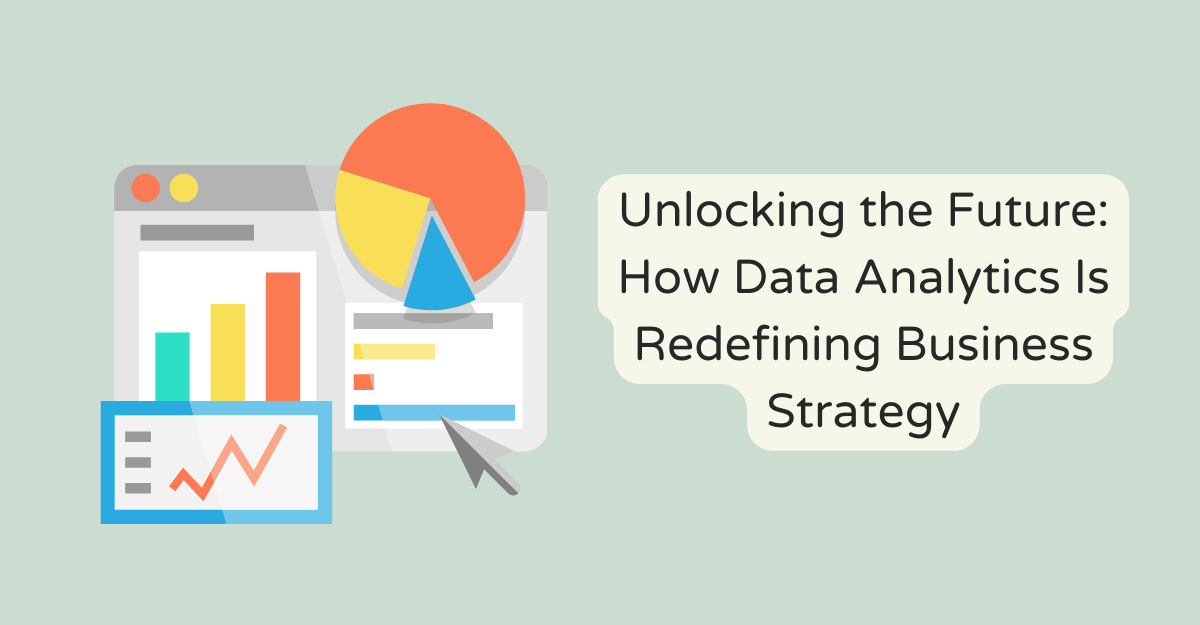
Introduction to Data Analytics in Business
The rise of data analytics has marked a seismic shift in how businesses construct their growth strategies and maintain a competitive edge. In the age of information, data is the fuel powering innovative business solutions and steering enterprises toward efficient, informed decisions. With the immense volume of data generated every second, the demand for expertise in the field has escalated to unprecedented heights.
This urgent need for skilled professionals is met by educational programs such as the online masters analytics, which arm students with the knowledge and tools critical for business strategy enhancement and refined decision-making processes.
By exploring the capabilities unlocked through data analytics, businesses are not only responding to consumer needs with greater agility. Still, they are also reimagining what it means to be a leader in the digital era.
Key Takeaways:
- Understanding the transformative role of data analytics in shaping business strategies and operations.
- Exploring the different types of data analytics and their applications in various industry sectors.
- Discussing the technologies driving the analytics revolution and the skills needed to harness their power.
- Real-world examples and case studies demonstrate the ROI of investing in data analytics.
- Anticipating future trends in data analytics and preparing for a data-driven corporate culture.
The Use of Data Analytics in Making Strategic Decisions
As the business environment grows more complex and interconnected, the impact of analytics-driven decision-making has become ever more pronounced. Analytics has emerged, shaping strategic planning and operational efficiency and fostering a more responsive approach to meeting market demands.
Companies leveraging data analytics can dissect hefty data sets to reveal patterns, correlations, and insights. It sheds light on what marketing initiatives resonate with customers or how supply chain operations can be optimized for cost efficiency.
Understanding the Types of Data Analytics
The three main categories of approaches used in the field of data analytics are descriptive, predictive, and prescriptive analytics. Each plays its role in interpreting and utilizing data to enhance business processes. Descriptive analytics compiles historical data to provide a clear snapshot of company operations or customer behavior.
Meanwhile, predictive analytics sifts through patterns to make educated guesses on potential future scenarios. Prescriptive analytics further recommends specific actions or strategies based on the derived insights. Grasping the nuance and scope of these analytics types allows for a tailored approach to addressing various business challenges and opportunities.
Challenges Faced by Businesses in Adopting Data Analytics
Despite the clear advantages, the journey toward full-scale adoption of data analytics comes with obstacles. Businesses must confront and navigate through issues of data security, privacy laws, and the looming skills gap among their workforce. Data breaches and violations of privacy can not only lead to significant financial loss and mar a company’s reputation.
There is an acute shortage of individuals with the requisite technical know-how and analytical capabilities to compound these challenges. To mitigate this, proactive steps like investing in higher education, like those provided by renowned online master analytics programs, are critical to ensuring a steady influx of skilled professionals in the data analytics domain.
The Technologies Revolutionizing Data Analytics
The landscape of data analytics is perpetually evolving, fueled by cutting-edge technological advancements. Artificial intelligence and machine learning enable the mining and analysis of big data sets at speeds and accuracies unachievable by human effort alone.
Big Data technologies handle the storage and processing of massive amounts of data, while cloud computing facilitates the accessibility and scalability of analytics tools.
Real-World Applications of Data Analytics
The utility of data analytics breaches the confines of theoretical strategies to find robust applications in real-world scenarios across various sectors. Retail companies utilize consumer purchasing data to tailor marketing campaigns and optimize inventory levels.
Health organizations analyze patient information to improve care and mitigate risks. Financial institutions leverage analytics for fraud detection and credit risk assessments. These applications yield tangible improvements to customer experiences, operational efficiencies, and financial strategies, illustrating the concrete benefits that data analytics brings to an organization’s daily life.
Measuring the ROI of Data Analytics Investments
While the advantages of data analytics integration are abundant, quantifying its financial return can be perplexing, often requiring a meticulous approach to measurement. Establishing clear, relevant metrics that resonate with business objectives enables organizations to monitor and evaluate the impact of data analytics effectively.
Firms need to foster an analytical mindset across departments, aligning data initiatives with broader business strategies to assess their actual value and contribution to organizational success.
Future Trends in Data Analytics
One must comprehend existing procedures and technologies as well as foresee future trends. The democratization of analytics through self-service platforms empowers employees across roles to access critical data insights.
The expansion of predictive analytics is carving out its place within the enterprise, becoming an entrenched part of decision-making processes. As more devices connect to the Internet, the Internet of Things is set to flood businesses with new data sources. These emerging trends are reshaping the data analytics landscape and sketching a blueprint of what’s to come shortly.
Building a Data Analytics Skillset for Future Careers
The burgeoning demand for data analytics talent is set to continue its ascent, expanding across industry realms. A well-rounded, comprehensive education, exemplified by qualifications from leading online master analytics programs, offers a springboard to those looking to join this dynamic field.
Certifications from Northwest Missouri State University are a benchmark of competencies for aspiring data professionals. At the same time, continuous learning remains the cornerstone of navigating a career amidst ever-evolving analytical technologies and concepts.
Conclusion
As businesses pivot to a data-centric worldview, weaving data analytics into the fabric of corporate culture is increasingly recognized as a strategic imperative. This shift necessitates championing data literacy, welcoming changes to longstanding business operations, and, above all, a commitment to perpetual learning.
Businesses may unlock doors to innovation, increased productivity, and long-term success in the digital age by creating an atmosphere where analytics is a tool and a fundamental part of the decision-making framework.